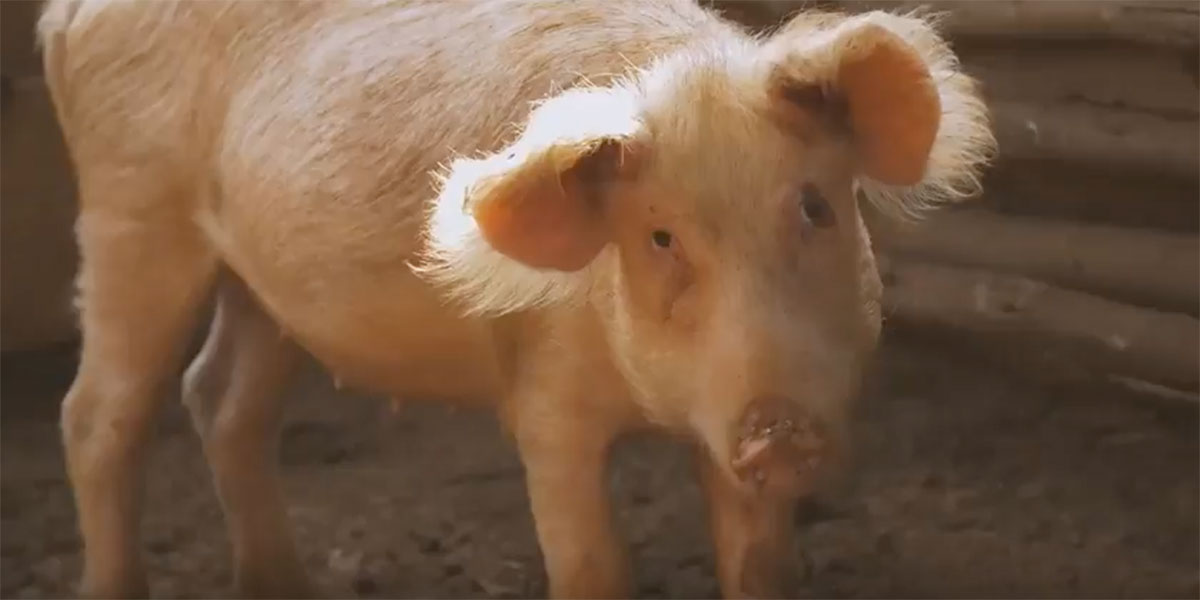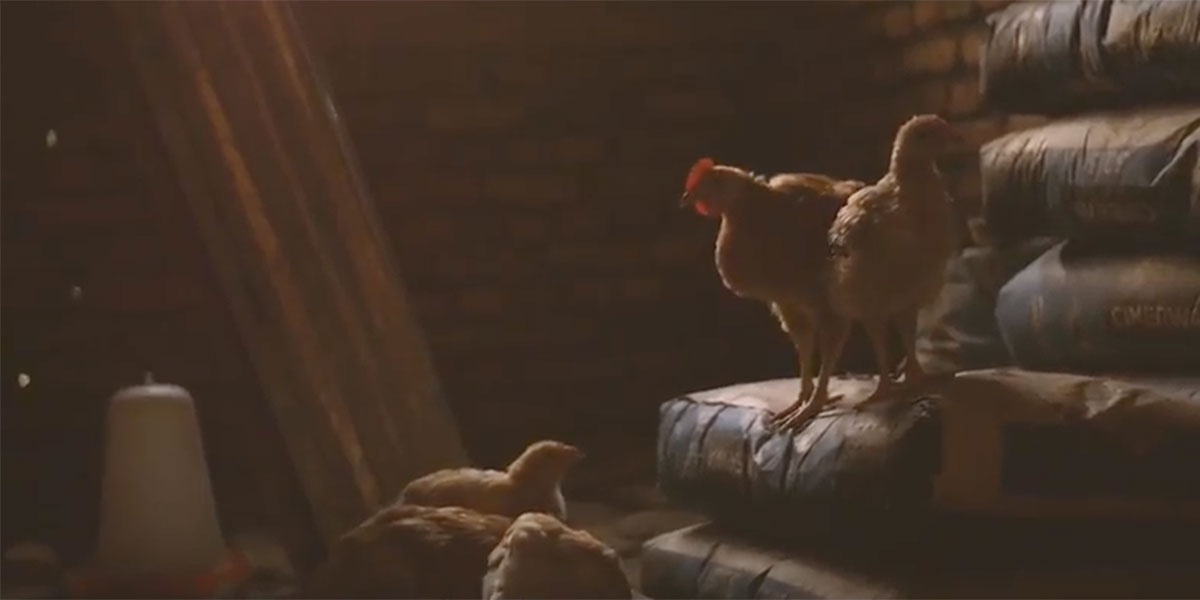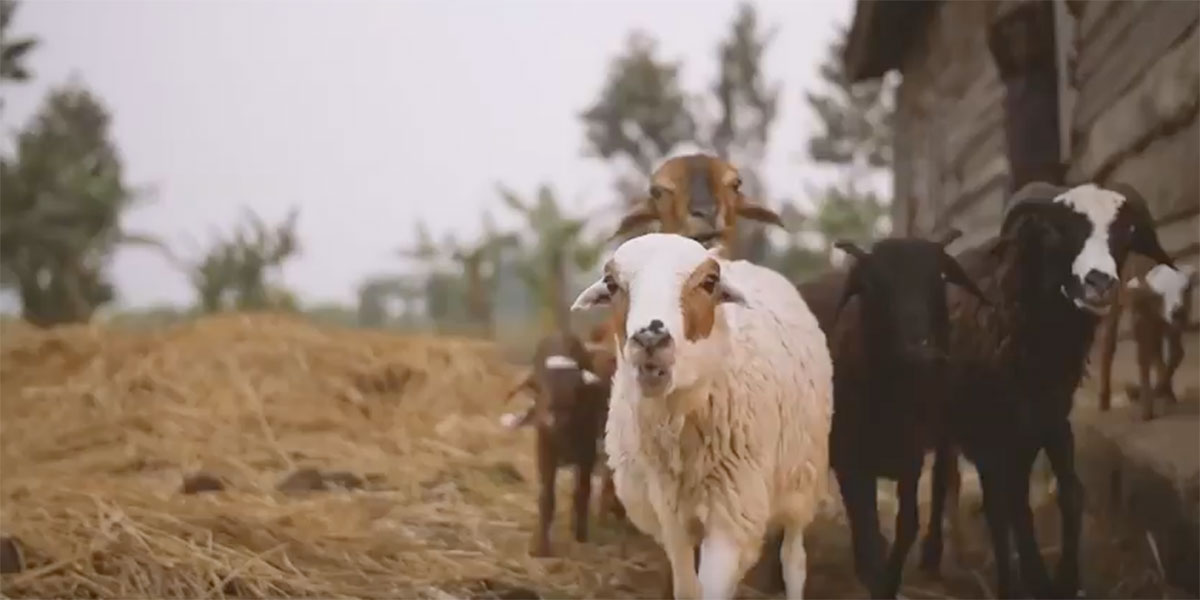When I was a little girl, my job at Christmas was putting out the nativity scene. I took this job very seriously and painstakingly placed the figurines in their “correct” spots. But my favorite part was putting the animals close to the manger. The sheep were there and the goats and cows, too — all bearing witness to the birth of our Savior.
Common livestock was present on the most important day in history. And today, when you or your church give a livestock bundle, you give a gift that will transform lives and point many to the hope found in Jesus Christ.
Stella knows firsthand the impact that livestock makes.
She lives in a poor community in Uganda. The problem with poverty is that it usually takes money to escape it — so Stella and her husband were stuck.
But then their community received a livestock bundle. Stella’s family was one of 14 families in the area chosen to receive an animal, and she knew that this would change her family’s life. Today, she is the proud owner and caretaker of a pig.
Others in her village are caring for goats and for cows; slowly, the cycle of poverty in Stella’s village is ending. All because someone chose to give the gift of livestock.
How can your church get involved?
In Luke 3, John the Baptist rebukes the crowd and instructs them on how to live as children of God:
“Anyone who has two shirts should share with the one who has none, and anyone who has food should do the same.” (Luke 3:11, NIV)
As the body of Christ, we are called to share our blessings with those in need.
While your congregation prepares to celebrate Christmas, pause and think about the communities around the world that are still waiting for help and hope.

You see, when you give a livestock bundle you are doing so much more than simply providing a community with the livestock they desperately need. Your congregation is acting as the hands and feet of Jesus by providing hope for the future.
Isn’t that what Christmas is all about?
There are several ways your church can get involved:
• You can ask small groups or individuals to donate the price of just one animal. For example, the suggested price to help provide a goat is $100, and the suggested price for pigs is $200. Before you know it, you will have raised the full $3,000 to give an entire community all of the livestock it needs.
• You can set a goal as a church to provide one or more livestock bundles and see which Sunday School classes can raise the most.
• You can even host a dinner and use the proceeds to purchase a livestock bundle.
Whatever you choose, by giving a livestock bundle, you are reaching out and extending help to another community. One that is made up of fathers and mothers and children and grandchildren — just like yours.
Will your congregation partner with a community in need by providing a livestock bundle?
Here’s how it works:
When you give a livestock bundle, you provide one agricultural community with the animals it needs most — from cows and pigs to goats and chickens. But it doesn’t just stop there. The families receiving the animals also receive specific training on how to care for the livestock and maximize your gift.

During the training, the farmer will learn how to feed his animals, manage the animals’ health, and how to build a proper shelter for them. By the time he receives his new animals, he and his family are ready for the responsibility.
That means that you are giving more than just livestock. You are equipping someone with training and skills that will last him his entire life.
Why livestock?
People living in poverty often struggle to get the proper nutrients they need to fight off sickness and disease. But malnutrition is a common problem that can be solved with a few healthy animals.
Cows and goats provide nutrient-dense milk that help children grow stronger. Chicken eggs are loaded with high-quality proteins, vitamins, minerals, good fats, and various trace nutrients. And the nitrogen-rich fertilizers these animals provide help farmers grow crops that will make their meals nutritiously diverse.

But the impact doesn’t stop there. A grown pig can produce 40 piglets in its lifetime, and those piglets can be sold for additional profit. The same is true for excess eggs and milk from chickens, cows, and goats.
A single animal can easily multiply one family’s income while also improving the community economy as a whole. And that extra money goes toward schools, quality homes, and more food.
There are many communities in countries like Guatemala, Uganda, and Rwanda that are ruled by poverty.
By giving a livestock bundle, your church can give them the key to financial and physical success. You and your friends can help transform an entire village.



